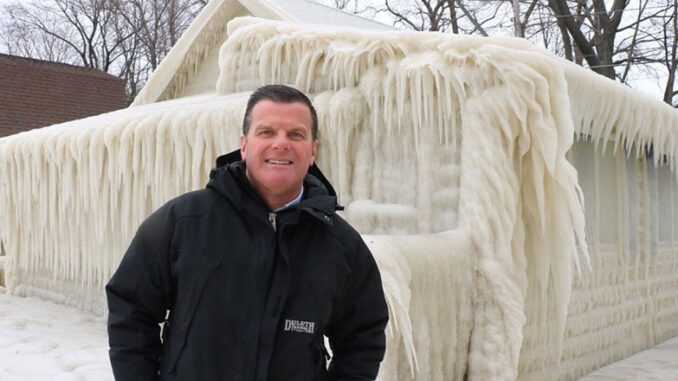
By Deborah Jeanne Sergeant
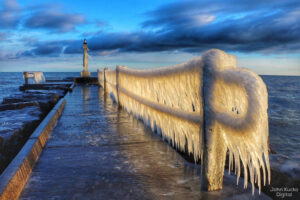
Outdoor winter photography offers its own challenges and opportunities. Nature photographer John Kucko of Penfield likes winter best of all the seasons for the dramatic images wintertime provides for his art photography.
“I’ve had some of my biggest viral hits in the winter,” he said of the photos he posts to social media. “I love shooting ice and showcasing ice. Winter is when we see the most beauty. I love seeing waterfalls in their frozen state.”
He also shoots the frozen shoreline along Lake Ontario.
In addition to the dramatic scenery, Kucko enjoys shooting in winter because it’s peaceful and more solitary as he’s outdoors seeking shots.
“In winter, people generally don’t like to brave the cold and elements,” Kucko said.
The glare of sun on snow or lowering clouds full of snow bring plenty of contrast to wintertime photography. A self-taught photographer, Kucko advises trial-and-error for finding the best angles and lighting during the winter months.
“For every one that’s good, there’s five or six that aren’t so good,” he said. “Don’t be afraid to make mistakes. I learn by those mistakes and try to do better.”
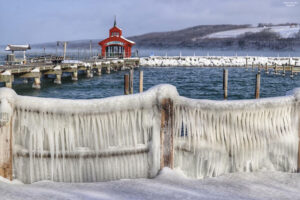
As you discover something you want to photograph, like a tree or body of water, try taking shots from different angles and at different times of the day to see how the light affects the subject.
Photographing all-white landscapes can prove difficult, since the brightness can cause the camera to overexpose the photo. While rays of sun shining across a sparkling, snowy field can create a pleasing effect, photographers don’t want the entire shot to appear washed out. To prevent this, adjust the camera’s settings to warn if the shot will be over exposed. Then increase the shutter speed accordingly.
While a fancy camera may seem essential equipment, Chris Kenyon, freelance outdoor writer and photographer in Wayne County, believes it’s not just about the equipment.
“The new camera phones have really come close to matching regular cameras with their tiny lenses which give you high resolution pictures,” he said.
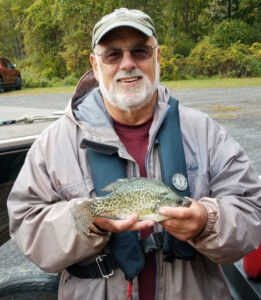
Since it’s always with you, your phone’s camera also allows you to snap those serendipitous shots that often make the best photos. But Kenyon warned that sometimes the autofocus features can be wonky. That great shot of a bald eagle might have the focus on the evergreen needles nearby instead of the bird. Only the very newest, most expensive models offer impressive zoom range.
Kenyon places 80% of the creation on what is seen through the lens — and how the photographer feels inspired to take it — and the remaining 20% on the quality and use of the equipment.
“That’s why I cringe when I see people holding a camera at arm’s length, high in the air trying to capture images,” Kenyon said. “You cannot compose photographs unless you look through the lens. You need to feel the shot.”
He feels that nature photography requires blending into the environment and taking enough time.
“If you are waiting for an action picture with birds, animals, or dogs retrieving, set your camera for a fast shutter speed,” he advised. “Digital single lens reflexes (SLR) have that capability, just like the old film cameras. If your subject is stationary, use slower speeds.”
Use a tripod if you cannot hold the camera steady. Kenyon also recommended image stabilizing lenses.
If that is not possible, hold your breath as you take the image. That may reduce your movement.
The cold will affect your equipment.
“If you are driving around during winter looking for the prefect picture, remember your camera sitting next to you in a heated vehicle will fog up as you step outside,” Kenyon said. “Give it time to acclimate with temperatures.”
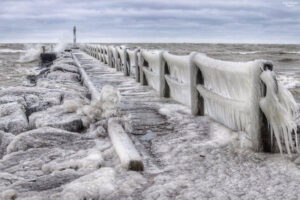
Before he heads out, Kucko packs extra batteries.
“Batteries lose their power more quickly in the cold, especially when it’s subfreezing,” he said. “Keep them as warm as possible, maybe in a pocket up against your body.”
It’s also important to dress properly to keep yourself warm, especially if you’re waiting a long time in the cold for the perfect shot.
Fingertip gloves can give you better dexterity while handling equipment. Some gloves include fingertips that work on touch screens, which can help you as you review photos you have taken.
“If you’re walking on ice, wear boots with spikes that allow you to walk on ice safely,” Kucko said. “A lot of people get seriously injured in the winter because they slip. I’ve taken a tumble or two and it’s not pleasant.”
Although public parks and spaces such as this are fine, always ask first to photograph on private land.
